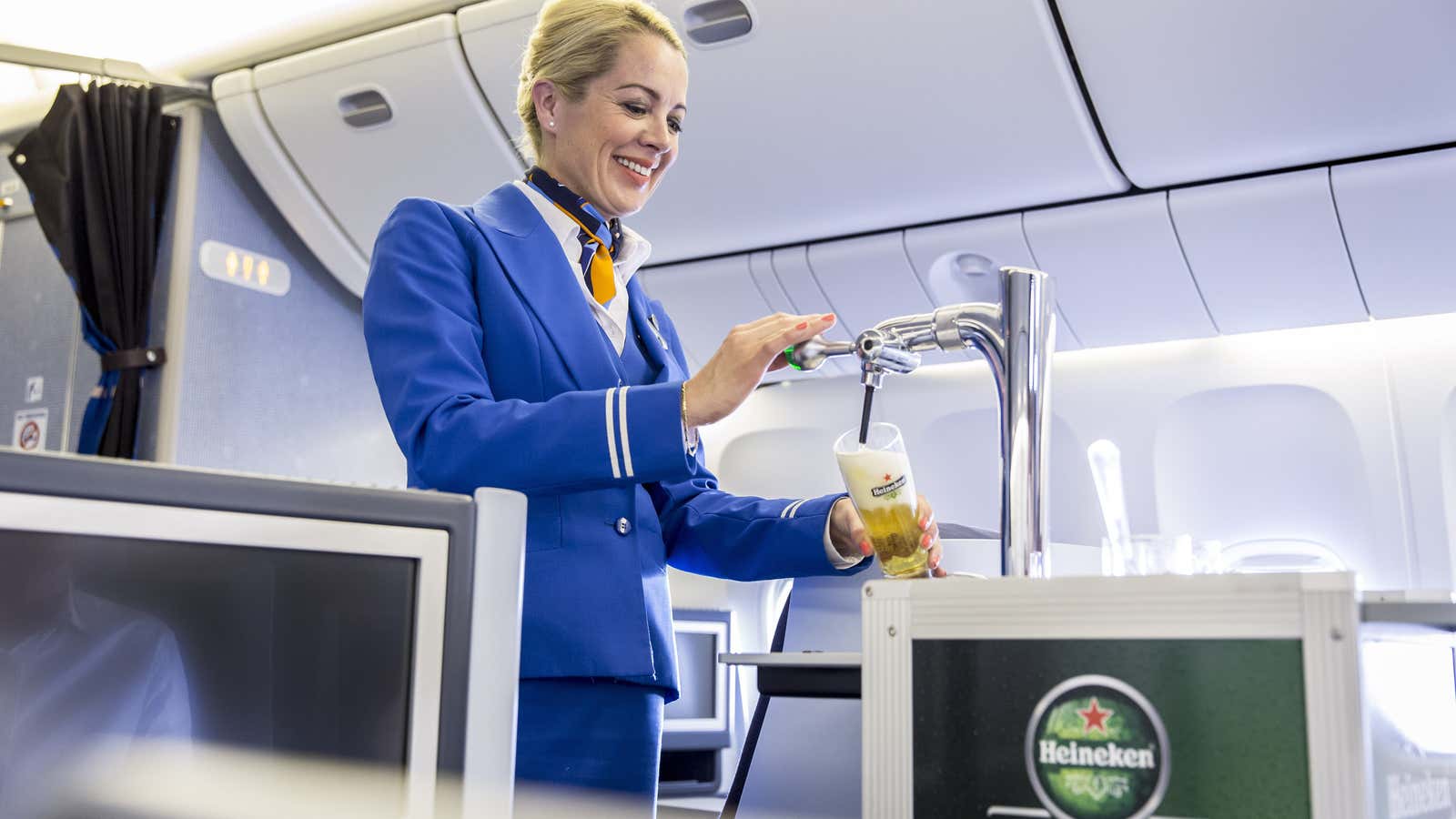Some airlines will stop at nothing to lure travelers on their planes. They’ve managed to fit sleeping pods, private apartments, and even an in-flight bar on board. But one nut they haven’t cracked? Serving draft beer high in the sky.
Safety restrictions and the laws of physics themselves make it such a difficult task (yes, even more so than the engineering feat of expanding legroom by two inches) that airlines generally don’t waste their time trying.
But rejoice. Dutch airline KLM and Dutch brewer Heineken think they’ve found a way. They are planning to serve beer on flights to Rio during the Olympics next month.
The main challenge has been how to get the beer out of the keg when you’re that high up in a pressurized environment. Draft beer poured at your local bar is pushed out of a keg using carbon dioxide—CO2 from a tank is piped into the keg, displacing the beer so it travels up the line and out of the tap. ”As you can imagine, things on board are not like when you’re working in a bar on the ground,” says a KLM spokesman.
Tanks of compressed CO2 are prohibited on board. A faulty valve or a fissure could turn a tank with tightly compressed gas into a rocket. So Heineken has to use air pressure to push the beer out of the keg into the tap. Therein lies another obstacle: in-cabin air pressure is lower than on the ground.
To get around the low cabin pressure, Heineken says it sets the air compressor to a higher level than it would at sea level. Without enough pressure to move the beer, you would end up with a cup full of foam.
(Foam isn’t necessarily a bad thing, though. Dutch beer is often served with lots of head, which Heineken says is best achieved through the pressure of a tap instead of just turning over a bottle or can and letting gravity do its job. Also, fans of draft beer argue that a layer of foam conserves the beer’s flavor.)
Unlike most steel kegs, Heineken “air keg” keeps the beer separate in a plastic bag. But the system isn’t perfect. There wasn’t enough room for a cooling system. The beer arrives at Amsterdam’s airport and is loaded onto the plane cold but once it is on board it’s a race against time so travelers may want to order early and often.
“In the end, we had to leave out one of those pieces to make it all fit, so with pain in our hearts we had to leave the cooling behind,” the product’s designer, Heineken’s Edwin Griffioen, told Fox News.
Even if you don’t mind a cool-to-lukewarm draft beer, it may not taste exactly like the ones at your local.
Our taste buds are less sensitive in the cabin, particularly to sweet flavors, which can make beer taste even more bitter than usual. It’s the reason in-flight wine can taste more alcoholic or bitter. Beer is arguably less affected than wine, though.
In-flight beer service could could be a “tough program to execute right,” says Paul Gatza, director of the Brewers Association. For example, only front of the plane will get their their draft in a glass; coach passengers get theirs in a plastic cup—which may undermine the vibe that KLM is going for and annoy glass-loving beer purists.
Despite the challenges, the coming era of on-board beer on tap could be enticing, Gatza notes. “If I saw a beer cart rolling down the aisle, I’d probably get awfully thirsty,” he says. Let’s just hope there are sufficient facilities for passengers to relieve themselves.
